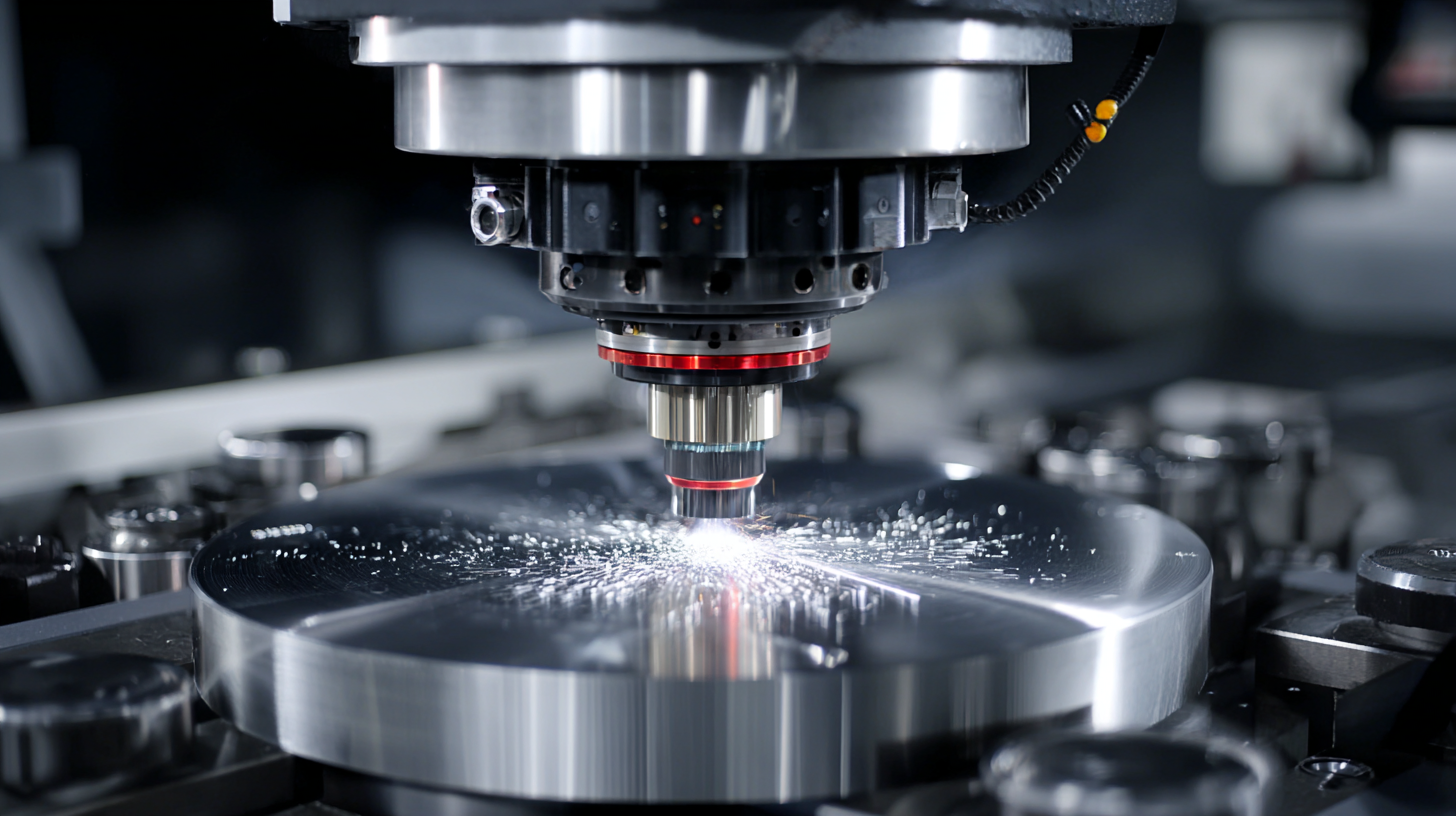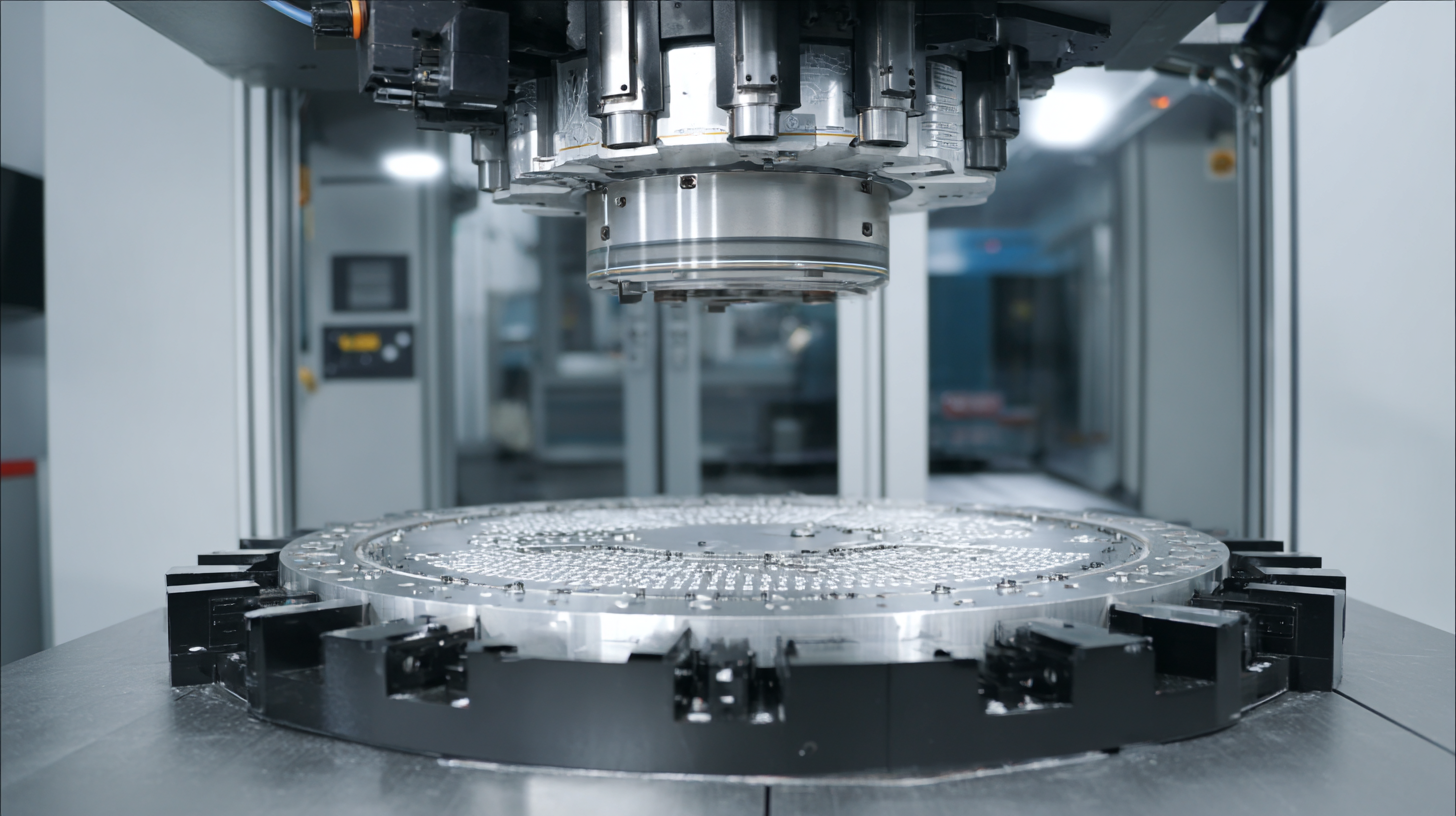The Future of Glass Edge Grinding Machines Revolutionizing Precision Manufacturing
In the ever-evolving landscape of precision manufacturing, the role of advanced machinery is increasingly critical, particularly in the processing of glass materials. One of the standout innovations in this sphere is the Glass Edge Grinding Machine, which is setting new standards for quality and efficiency. As manufacturers strive to meet the growing demand for high-performance glass products, these machines are revolutionizing the way glass edges are processed, ensuring a level of precision previously thought unattainable. This blog will explore the key features and benefits of modern Glass Edge Grinding Machines, providing a comprehensive checklist for manufacturers considering an upgrade. From enhanced accuracy and reduced waste to increased operational speed, we will delve into how these cutting-edge machines are transforming the industry and paving the way for future advancements in glass manufacturing.
The Evolution of Glass Edge Grinding Machines: A Historical Perspective
The evolution of glass edge grinding machines has played a pivotal role in the precision manufacturing sector, particularly in the glass industry. Historically, glass edge processing was a labor-intensive activity, relying heavily on manual techniques. However, as technological advancements emerged, mechanization began to take hold. By the early 2000s, the introduction of CNC (Computer Numerical Control) machines marked a significant milestone, improving accuracy and reducing production times. Industry reports indicate that the global glass production market is expected to reach $179.9 billion by 2027, partly fueled by innovations in machining technologies.
As manufacturers sought more efficient and precise processing techniques, the demand for advanced grinding machines surged. According to a 2020 market research report, the glass edge grinding machine sector alone is projected to grow at a compound annual growth rate (CAGR) of 6% from 2021 to 2026. This growth can be attributed to the increasing applications of glass in various industries, including automotive, architecture, and electronics, where precision and surface quality are paramount. The integration of automation and smart technology in grinding machines is set to further revolutionize the industry, ensuring high-quality output while minimizing human error and resource wastage.
Key Technologies Transforming Glass Edge Grinding: An In-Depth Examination
The evolution of glass edge grinding machines is poised to reshape the landscape of precision manufacturing, particularly through advancements in core technologies. As per a recent report by Markets and Markets, the global glass processing market is projected to reach USD 19.22 billion by 2025, with a significant portion driven by innovations in edge grinding. These machines leverage automation and CNC technology to enhance precision and efficiency, reducing production times by up to 30% while achieving tolerances as tight as ±0.01 mm.
Furthermore, the integration of smart technology and IoT in glass edge grinding machines facilitates real-time monitoring and predictive maintenance, thus minimizing downtime and operational costs. Industry analysts suggest that adopting these technologies can lower maintenance expenses by nearly 20%, allowing manufacturers to allocate resources more effectively. With advancements such as adaptive grinding techniques and AI-driven quality control, the future of glass edge grinding promises not just increased output but also superior product quality, setting new industry standards in manufacturing excellence.
The Future of Glass Edge Grinding Machines
This chart illustrates the impact levels of key technologies transforming glass edge grinding in precision manufacturing. Each dimension is rated on a scale from 1 to 10, highlighting the significance of precision and automation in enhancing production efficiency.
Industry Statistics: The Growth of Precision Manufacturing and Glass Edge Grinding Machines
The precision manufacturing industry is witnessing remarkable growth, fueled in part by advancements in glass edge grinding technology. According to a recent report by MarketsandMarkets, the global precision manufacturing market is projected to reach $15.93 trillion by 2028, growing at a CAGR of 7.2% from 2021. This expansion emphasizes the increasing demand for high-quality, precise components in various sectors, including electronics, automotive, and construction. As a crucial part of this landscape, glass edge grinding machines are becoming indispensable to meet the rising expectations for precision and efficiency.
One significant factor driving the adoption of glass edge grinding machines is the need for enhanced product quality. A study by Grand View Research indicates that the global glass processing market, which heavily relies on these machines, is estimated to grow at a CAGR of 6.5% from 2022 to 2030. As manufacturers strive for exacting standards, integrating advanced glass edge grinding technology becomes essential for achieving optimal results.
Tip: To fully capitalize on this growth, manufacturers should consider investing in automated glass edge grinding systems, which can significantly reduce production time and labor costs while ensuring consistency and precision. Additionally, routine maintenance of these machines will enhance their longevity and efficacy, leading to better output quality.

Case Studies: Successful Implementations of Advanced Glass Grinding Techniques
In the world of precision manufacturing,
advanced glass edge grinding techniques are setting new standards for efficiency and quality.
Case studies from leading manufacturers highlight how implementing cutting-edge glass edge grinding machines
has transformed their production processes.
For instance, a prominent European glass manufacturer integrated automated grinding solutions
that not only enhanced the precision of their products but also significantly reduced processing time.
By utilizing CNC-controlled grinding machines equipped with diamond tools,
they achieved a level of accuracy that was previously unattainable, resulting in lower waste rates and
higher customer satisfaction.

Another notable case comes from an Asian tech company specializing in optical glass.
They adopted a hybrid grinding method that combines traditional techniques with modern automation.
This innovative approach enabled them to finely tune the edge profiles of their products,
ensuring optimal performance in applications such as lenses and screens.
The improved consistency and surface finishes attracted major partnerships with high-end electronics brands,
illustrating the profound impact of advanced glass grinding techniques on competitive advantage.
These examples showcase the vital role that modern technology plays in revolutionizing glass manufacturing,
underscoring the necessity for companies to embrace these innovations for sustained success.
Future Trends: Innovations Shaping Glass Edge Grinding Machines in 2025 and Beyond
In 2025 and beyond, the landscape of glass edge grinding machines is set to be transformed by a wave of innovative technologies that promise to enhance precision manufacturing. As industries increasingly seek efficiency and sustainability, the integration of advanced automation and AI capabilities into glass processing will revolutionize operational workflows. These machines will not only improve accuracy but also reduce waste, aligning with the global push towards more environmentally friendly manufacturing practices.
Moreover, the emergence of smart manufacturing technologies is paving the way for enhanced connectivity and real-time monitoring in glass edge grinding operations. By incorporating IoT devices, manufacturers will be able to gather valuable data, enabling predictive maintenance and streamlined processes. This shift will help in minimizing downtime and maximizing productivity, addressing challenges that have plagued the sector for years. As the demand for high-quality glass products continues to rise, companies that embrace these innovations will be well-positioned to lead the market in the coming years.

Home
About Us
Products
UPVC PVC Window Machine
Aluminum Window Machine
Glass Cutting Machine
Glass Edging Machine
Insulating Glass Machine
Glass lifting machine
Glass Washing Machine
Glass Laminating Machine
Glass Sandblasting Machine
Glass Drilling Machine
CNC Glass Working Center
CNC Non-Metal Cutting Machine
The Other Glass Machinery
Application
Download
News
Contact Us


